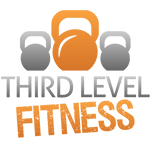Making It Through Winter Blog #5 – Things You Dont Know About Winter Workouts
1) You burn more calories outside in the cold
This is a true statement, but it may be a little misleading. According to a University of Utah study reported on by the New York Times, basal metabolic rate (that’s how many calories you burn at complete rest, without any movement at all) increases in colder temps. If clothed properly for the weather, this happens because the body has to heat the inhaled air enough for our lungs to properly utilize it. However, the increase from your normal caloric burn rate is very small. Maybe it would be enough to burn off a couple of grapes, but not enough for that beer and pizza you threw back on the couch while watching the snow fall.
The shiver effect is when you increase your BMR significantly! The leaner you are, the more of an affect shivering has on your metabolism. In a much reference study, individuals with lower body fat “shivered at higher intensity, resulting in higher increases in metabolic heat production and convective heat loss during cold air exposure.”
To sum this all up…get outside some. Get some Vitamin D, a little cold air, and shiver a bit!
2) Take your sweaty clothes off ASAP
If you are planning on working out and sweating those clothes up outside, don’t hang out too long. As warned by most outdoors organizations, wet means cold. Not like, “cool, I’m burning more calories” type cold. More like, “Damn, now I’ve got hypothermia” type cold.
3) You can still exercise through those sniffles
Colds are more common in winter, but you don’t necessarily have to stop exercising if you’re feeling under the weather. According to Dr. Keith Hopcroft, a GP from Basildon in Essex, “If your symptoms are not severe and you generally feel OK, then you can exercise. If you feel absolutely rotten, then it’s best not to go.” Just use common sense and listen to your body if you’re not sure whether or not going for a workout is wise.
However, it’s important not to exercise if you have a fever. A fever is when your body’s temperature is 38°C (100.4°F) or above and is rarely a symptom of a cold. “If you exercise with a fever,” says Dr. Hopcroft, “it’ll make you feel worse. In very rare cases, exercising with a fever can lead to the virus affecting your heart, which can be dangerous.”
If you have asthma, take extra care when exercising in winter. The cold air hitting your lungs can trigger an asthmatic attack. Dr. Hopcroft recommends keeping your inhaler on hand if you do decide to exercise in the cold.
4) Warm up, adjust your body, then warm up again
Before any workout, walk around or jog in place indoors for five minutes, recommends Olympian Jeff Galloway, coauthor of A Woman’s Guide to Running. When you head out, give your body time to adjust to the conditions by taking 30-second breaks every few minutes for the first 10-15 minutes. Shiver when you are playing outside in the cold, not when you are trying to step outdoors for sport performance.
5) Hyrdate
It’s easy to forget about proper hydration when you don’t see or feel your sweat as much. But you can still just as much when exercising in the cold (especially if you’re bundled up). Remember the same basic rules of exercise hydration apply. During exercise days, use the following method: 20 ounces 2 hours before exercise, drink during exercise, and finally weigh yourself after exercise. As soon as possible, drink 20 ounces of water for every pound of weight loss. Remember, if you exercise, the old eight ounce servings of water is too little—so drink up!

